Guide To Choosing: Prepaid Cell Phone Plans Vs Postpaid Cell Phone Plans
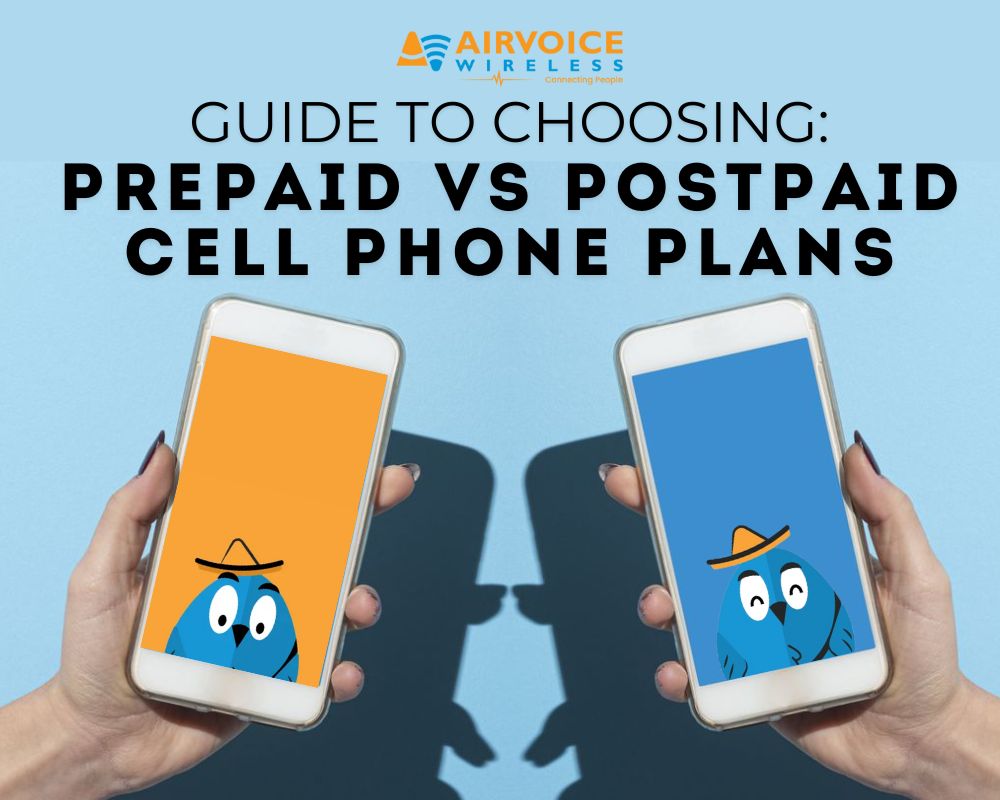
In a Nutshell:
The article compares prepaid and postpaid mobile plans, outlining their features, advantages, and disadvantages. It highlights prepaid plans’ flexibility, cost control, and accessibility, making them a preferred choice for budget-conscious users, while also discussing the features and benefits of postpaid plans.
- Prepaid plans offer upfront payment, no contracts, and flexibility in switching plans or carriers.
- They provide cost control, accessibility regardless of credit history, and options tailored to budget-conscious users.
- Postpaid plans, while offering more features, come with credit checks, contracts, and potentially higher monthly costs.
- Consider your usage patterns, budget, credit history, and travel needs when deciding between prepaid and postpaid plans.
Understanding Prepaid Phone Plans
What is a Prepaid Plan?
A prepaid plan is a mobile phone service agreement in which customers pay for services in advance, before using them. With a prepaid plan, users purchase a specific amount of credit or a “top-up” that they can then use to make calls, send texts, and access data. Once the prepaid credit is used up, customers need to add more credit to continue using the service. Prepaid plans are commonly used by people who want to budget their mobile expenses, those with irregular income, and individuals who may not have a credit history. They’re also popular among travelers and those who don’t require extensive mobile services but still want a reliable means of communication with a pay-as-you-go plan option.
Advantages of Prepaid Phone Plans
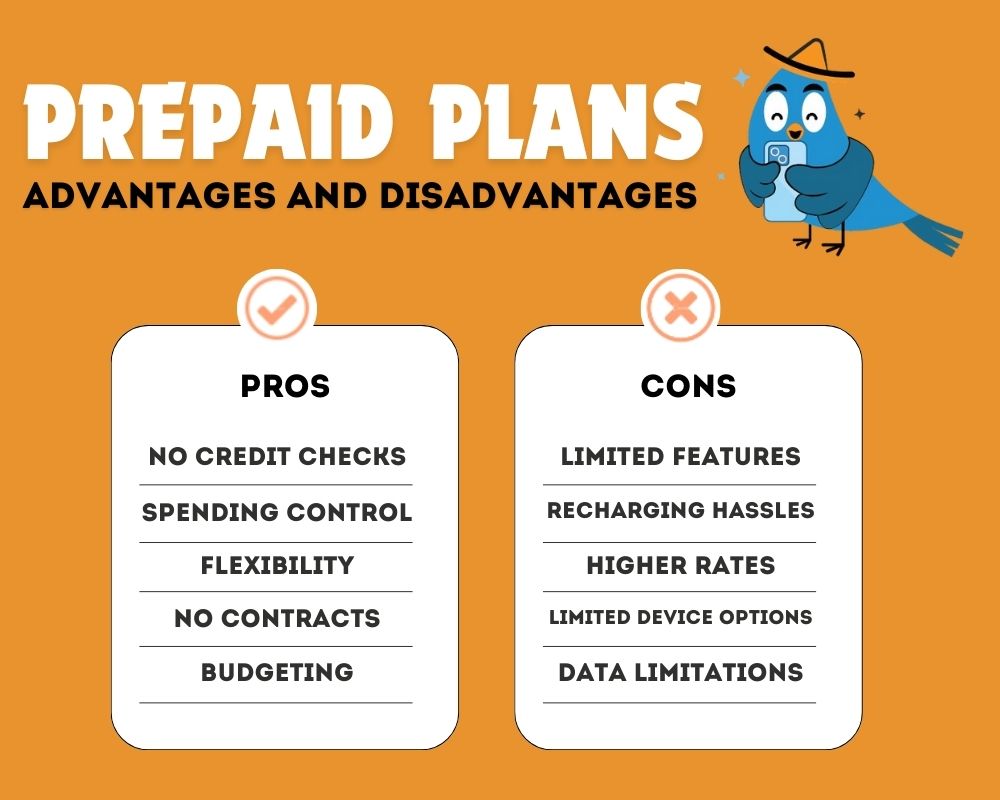
When it comes to prepaid phone plans, flexibility is the name of the game. You get to change your plans or carriers without facing any penalties, offering a level of freedom that can be quite refreshing. One of the standout benefits is cost control – you only pay for what you need, exactly when you need it. This can be a game changer for anyone looking to manage their spending better. Plus, prepaid plans welcome everyone, as there are typically no credit checks needed. This means getting a phone plan is less about your financial history and more about your current preferences.
- No Credit Checks: Prepaid plans do not typically require a credit check, making them accessible to individuals who may not qualify for postpaid plans or those who prefer not to undergo a credit check.
- Spending Control: With prepaid plans, users pay for services upfront, which gives them better control over their spending. They can monitor their usage and recharge their account as needed, avoiding unexpected charges.
- Flexibility: Prepaid plans often offer more flexibility than postpaid plans. Users can switch plans or providers more easily since they’re not bound by contracts. They can also change plans or providers without penalties.
- No Contracts: Unlike postpaid plans, prepaid plans usually do not require long-term contracts. Users have the freedom to stop using the service or switch to a different plan or provider without facing termination fees.
- Budgeting: Prepaid plans are suitable for budget-conscious individuals since they allow users to manage their expenses more effectively. Users can choose how much credit to purchase based on their budget and usage needs. Plan pricing can usually be customized based on user’s needs.
Disadvantages of Prepaid Phone Plans
Despite their appeal, prepaid phone plans do come with certain drawbacks. One of the main drawbacks is the risk of service interruption. If you forget to recharge your plan, you might find yourself without service at a critical moment. Additionally, these plans often come with fewer bells and whistles compared to postpaid offerings – think limited premium services and benefits. The cost per unit of service can also be higher, meaning you might end up paying more for the same amount of usage over time.
- Limited Features: Prepaid plans may offer fewer features and bonuses compared to postpaid plans. For example, they may not include features such as international roaming, device financing options, or premium customer service.
- Recharging Hassles: Users need to remember to recharge their prepaid account regularly to maintain service. Forgetting to recharge can result in service interruptions, which may be inconvenient, especially in emergencies.
- Higher Per-Minute/Per-Text Rates: Prepaid plans often have higher per-minute or per-text rates compared to postpaid plans. While this can provide flexibility, it can also be more expensive for users who make frequent calls or send many texts.
- Limited Device Options: Some prepaid plans may have a limited selection of devices available for purchase. Users may not have access to the latest iPhones or android smartphones or may have to pay the full retail price upfront if they chose prepaid phones.
- Data Limitations: Prepaid plans often come with data limitations, and users may need to purchase additional data packs if they exceed their allotted data allowance. This can result in additional expenses and inconvenience.
Understanding Postpaid Phone Plans
What is a Postpaid Plan?
A postpaid plan is a mobile phone service agreement in which a customer pays for services after using them, usually on a monthly basis. With a postpaid plan, customers are billed at the end of the billing cycle for the services they have used, including voice calls, text messages, and data usage. These plans often include a set monthly fee for a certain amount of services (such as a set number of minutes for voice calls, texts, and a data allowance), with additional charges incurred for usage beyond these limits. Postpaid plans typically require a credit check or some form of financial verification since the service provider extends credit to the customer, trusting that they will pay their bill at the end of each billing cycle. These plans often come with benefits such as discounted rates on devices, priority customer service, and the ability to roam internationally.
Advantages of Postpaid Phone Plans
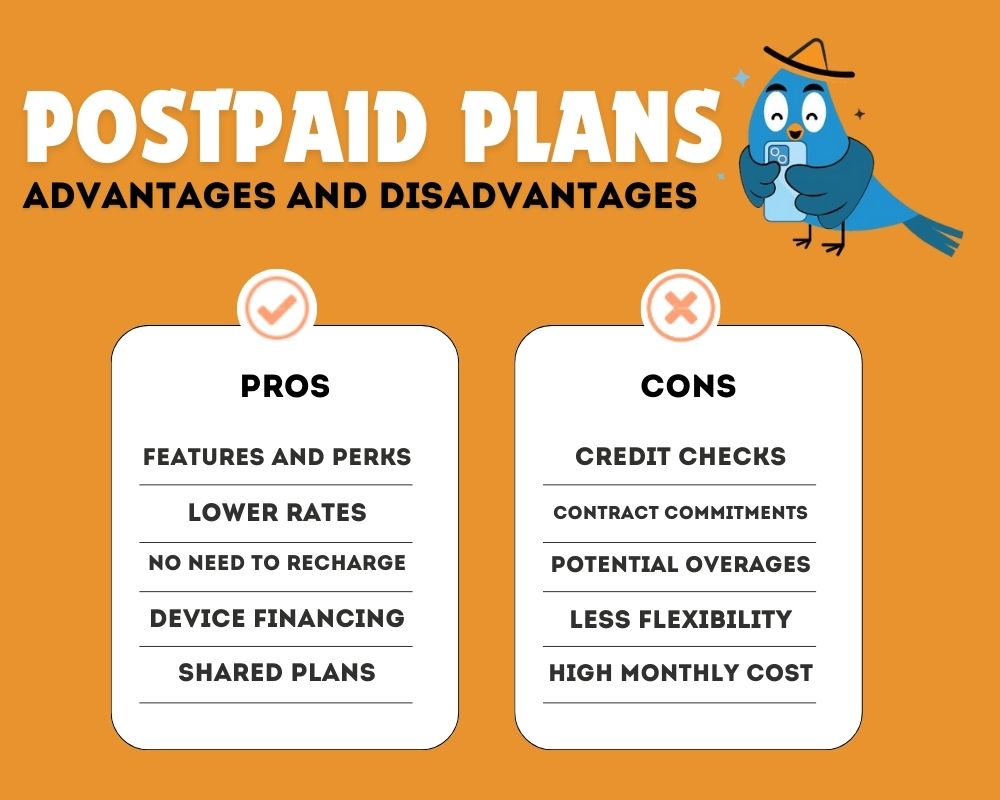
The allure of postpaid phone plans largely lies in their predictability and the suite of extras they bring to the table. With these plans, budgeting for your mobile expenses becomes a lot easier thanks to fixed monthly charges. You can often revel in the convenience of bundled services, which may include unlimited talk, text, and variable data allotments tailored to your needs. Moreover, postpaid plans frequently come with an array of freebies, ranging from subscriptions to streaming services to travel benefits, enhancing your overall service experience.
- More Features and Perks: Postpaid plans often come with more features and add-ons compared to prepaid plans. These may include benefits like international roaming, device financing options, premium customer service, and access to exclusive content or promotions.
- Lower Per-Minute/Per-Text Rates: Postpaid plans typically offer lower per-minute or per-text rates compared to prepaid plans. This can be beneficial for users who make frequent calls or send many texts, as it can result in cost savings over time.
- No Need to Recharge: Unlike prepaid plans, postpaid plans do not require users to recharge their account regularly. Users are billed at the end of the billing cycle for the services they have used, so there’s no risk of service interruptions due to forgetting to recharge.
- Device Financing: Postpaid plans often allow users to finance the purchase of a new device over time, spreading the cost of the device into monthly payments. This can make it more affordable for users to obtain the latest smartphones without paying the full retail price upfront.
- Shared Plans: Many postpaid plans offer the option for multiple lines to be included in a shared plan, allowing families or groups to share minutes, texts, and data allowances. This can be more convenient and cost-effective for households with multiple users.
Disadvantages of Postpaid Phones
The flip side of postpaid phone plans can include some commitments and financial requirements that might not be right for everyone. A credit check is often part of the process when signing up, which can be a stumbling block for some. Additionally, you’ll usually be locking yourself into a contract, which could have penalties or fees if you decide to opt-out early. It’s also possible that the ease of a postpaid plan could lead to less vigilance with usage and higher costs, especially if you’re not using all the services you’re paying for. And while the upfront cost for a high-end device may be lower with a postpaid contract, it can result in higher overall expenditure over the contract period.
- Credit Checks: Postpaid plans typically require a credit check or some form of financial verification since the service provider extends credit to the customer. Users with poor credit may not qualify for certain postpaid plans or may be required to pay a security deposit.
- Contract Commitments: Postpaid plans often require users to sign a contract committing to a specific term, such as one or two years. Breaking the contract early may incur termination fees, which can be expensive.
- Potential for Overages: Postpaid plans may come with limits on minutes, texts, and data usage, and users may incur overage charges if they exceed these limits. While some plans offer unlimited usage, others may have strict limits or throttle data speeds after a certain threshold is reached.
- Less Flexibility: Postpaid plans can be less flexible than prepaid plans since users are locked into a contract for a specific term. Switching plans or providers before the contract term expires may result in penalties or fees.
- Higher Monthly Costs: Postpaid plans often have higher monthly costs compared to prepaid plans, especially for plans with extensive features, large data allowances, or device financing options. Users may end up paying more over time, particularly if they do not fully utilize the features and services included.
Prepaid versus Postpaid Plans: A Comparison Table
Now that we’ve understood the pros and cons of each cellular phone plan, let’s look at a comparison table outlining the key differences between prepaid and postpaid plans. To help users make an informed decision, always remember to look at one’s preferences, usage habits, and budgetary constraints before choosing your mobile phone plan.
| Aspect | Prepaid Plans | Postpaid Plans |
| Payment Method | Pay in advance for services | Pay after using services at the end of billing cycle |
| Credit Check | Typically not required | Usually required |
| Contract | No long-term contracts | Requires signing a contract for a specific term |
| Flexibility | More flexible, easier to switch plans/providers | Less flexible, may incur penalties for early termination |
| Features | Fewer features and perks | More features and perks |
| Control Over Spending | Users have better control over spending | Users may have less control over spending |
| Device Options | Limited selection of devices, often pay full price upfront | Often allows device financing over time |
| Monthly Costs | Generally lower monthly costs | Generally higher monthly costs |
| Overage Charges | No overage charges, usage stops when credit is depleted | May incur overage charges if usage exceeds plan limits |
| Credit Requirements | No credit check required, suitable for individuals with poor credit | Credit check required, may require good credit score |
| Recharging | Need to recharge account regularly to maintain service | No need to recharge, billed at the end of billing cycle |
| Shared Plans | Limited shared plan options | Often offers shared plans for multiple lines |
Additional Considerations
Beyond the features outlined in the comparison table, there are several additional factors to consider when choosing between postpaid and prepaid mobile plans. By considering these additional factors alongside the features outlined earlier, you can make a more informed decision about whether a postpaid or prepaid mobile plan is the right choice for you.
- Usage Patterns: Evaluate your typical usage patterns for voice calls, text messages, and data usage. If your usage tends to be consistent and predictable, a postpaid plan might offer convenience with its monthly billing cycle. However, if your usage fluctuates or you want more control over your spending, a prepaid plan could be more suitable.
- Budget: Consider your budget and how much you’re willing to spend on mobile services each month. Prepaid plans often provide more transparency and control over spending, making them suitable for budget-conscious individuals. On the other hand, postpaid plans may offer additional features and services but can come with higher monthly costs.
- Promotional Offers: Keep an eye out for promotional offers and discounts available from mobile carriers on their websites. Both prepaid and postpaid plans may offer incentives such as discounted rates, bonus data, phone discounts, or free devices to attract new customers. Compare these offers to find the best value for your needs.
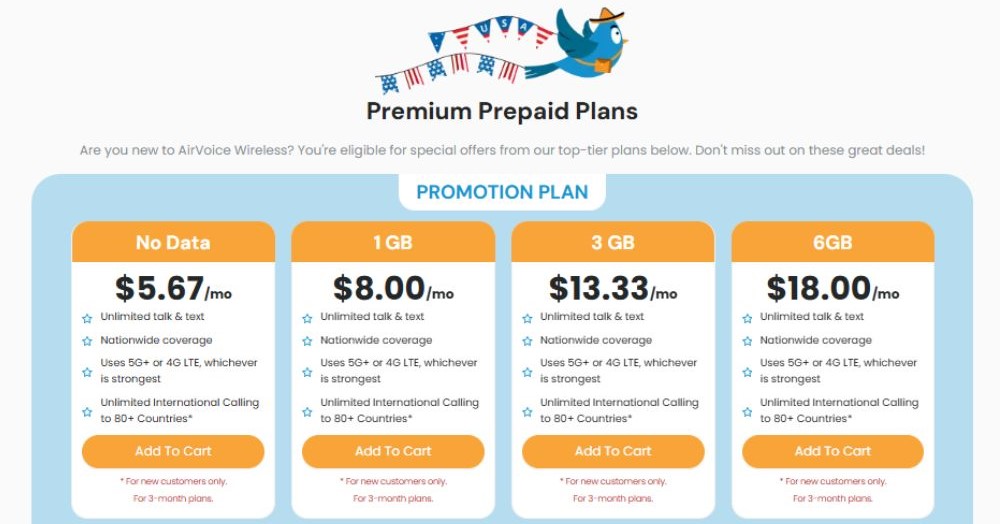
airvoice plans - Credit History: Your credit history can influence your eligibility for postpaid plans. If you have a strong credit score, you may qualify for more favorable terms and features with a postpaid plan. However, if you have a limited credit history or poor credit, a prepaid plan may be a more accessible option since it typically doesn’t require a credit check.
- Travel Needs: Consider your travel habits and whether you need mobile service while traveling internationally. Postpaid plans often include international roaming options, making them convenient for frequent travelers. Prepaid plans may offer international roaming options as well, but they can vary in terms of availability and cost.
- Contract Commitment: Think about whether you’re comfortable committing to a contract with a postpaid plan. Postpaid plans typically require signing a contract for a specific term, which may include early termination fees if you decide to switch providers before the contract ends. Prepaid plans, on the other hand, offer more flexibility since they don’t require long-term contracts.
- Customer Service: Consider the level of customer service provided by the mobile carrier. Postpaid plans often come with dedicated customer support and priority service for troubleshooting issues. Prepaid plans may offer customer service options as well, but the level of support can vary depending on the provider.
- Family Plans: Consider the number of members in your household. Some prepaid providers offer family plans that allow multiple lines to share a pool of minutes, texts, and data. However, the options may be more limited compared to postpaid family plans. Many postpaid providers offer dedicated family plans that allow multiple lines to be grouped together under a single account. These plans often come with discounted rates for additional lines and may include additional features such as unlimited calling between family members.
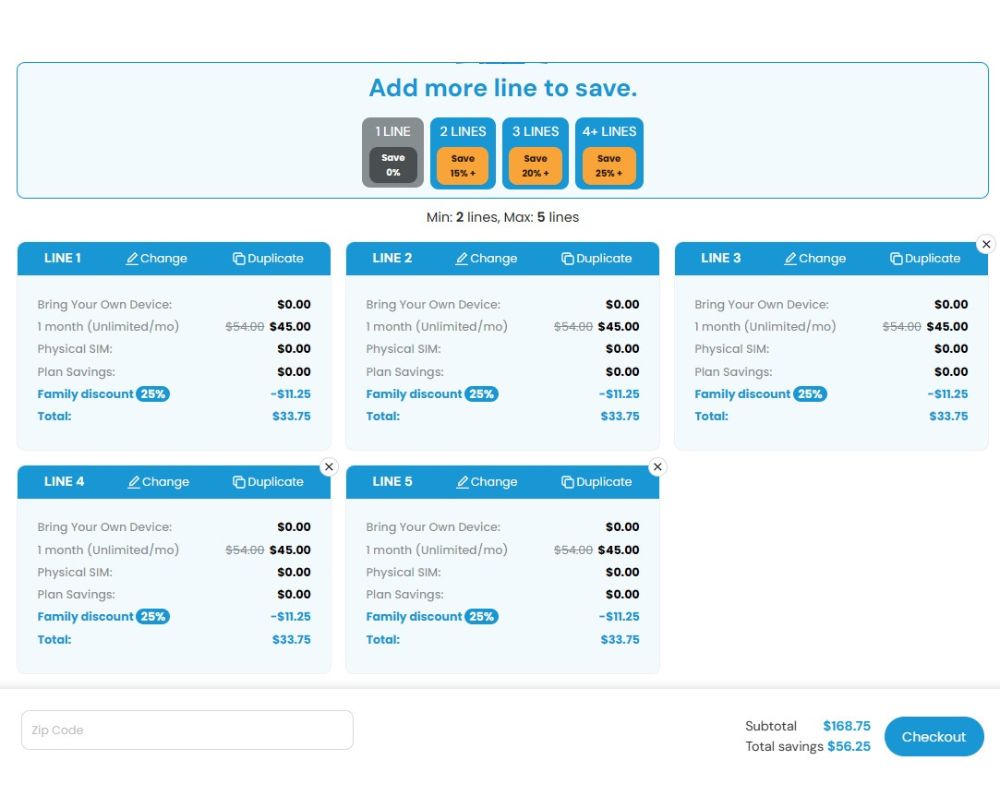
Summary of Postpaid and Prepaid differences
Remember, there’s no one-size-fits-all solution; your optimal choice may differ from someone else’s due to individual circumstances. Carefully weigh the pros and cons; and consider how each plan aligns with your mobile usage, budget constraints, and desire for additional services. Before choosing which mobile provider is best for you, keep these key points in mind, you can select a cell phone plan that fits neatly into your life puzzle and ensures you stay connected in the way that works best for you.
Postpaid plans are tailored to meet the needs of high data users, offering comprehensive data packages that often provide better value compared to prepaid alternatives. These plans also typically include extensive long-distance communication options, such as Valley TeleCom Group’s BusinessVoice Long Distance, which caters well to frequent travelers and business users. While historically offering upgrades like subsidized phones, the prevalence of these benefits is decreasing as the telecom market evolves. On the other hand, prepaid plans provide a different approach to mobile service, offering flexibility and control over spending without the commitment of a contract. They tend to serve users with variable usage patterns and are ideal for those seeking budget-friendly options.
Prepaid plans offer users greater control over their budget by allowing upfront payments for data, talk time, and text messaging without the risk of unexpected charges. MVNOs like AirVoice Wireless, have no mandatory contracts so users enjoy the freedom to switch plans or carriers without penalties. Prepaid is ideal for budget-conscious individuals who prefer to closely manage their monthly spending and want to avoid overspending. Some prepaid carriers have even begun offering competitive features traditionally associated with postpaid plans. These plans are particularly suitable for users with fluctuating or low usage patterns, preventing the wastage of unused services. AirVoice Wireless stands out as a noteworthy option, providing a reliable network and blending cost-effectiveness with reliability inherent to prepaid plans.
Conclusion
In conclusion, while both prepaid and postpaid plans offer distinct advantages, prepaid plans stand out as a compelling option for individuals seeking greater control, flexibility, and cost-effectiveness in their mobile service. With prepaid plans, users enjoy the freedom to pay upfront, eliminating the risk of unexpected charges and the constraints of binding contracts. This model caters especially well to budget-conscious consumers who value the ability to manage their expenses closely and avoid overpaying for unused services. Additionally, prepaid carriers like AirVoice Wireless have bridged the gap by offering competitive features traditionally associated with postpaid plans, making prepaid an increasingly attractive choice for a wide range of users. Overall, the inherent benefits of prepaid plans, including control over spending and flexibility, make them a preferred option for those seeking a reliable and cost-effective mobile solution.
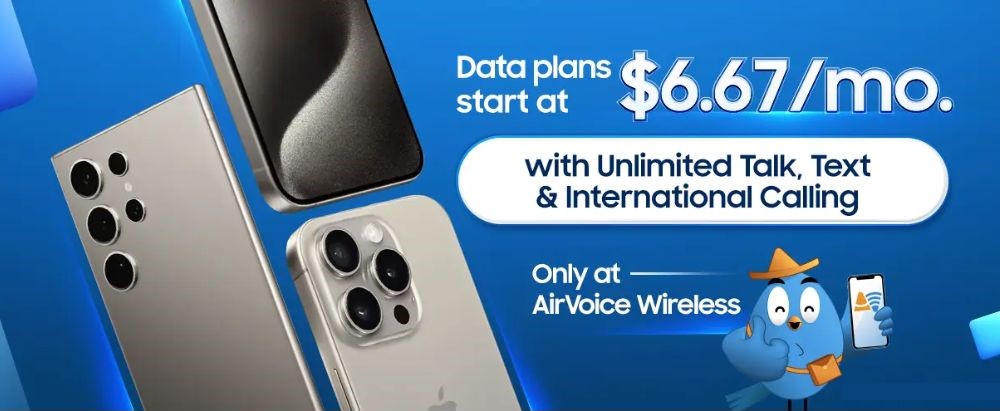
FAQs: Navigating the Maze of Mobile Decisions
What’s the main difference between prepaid and postpaid plans?
Prepaid plans require users to pay for services upfront, while postpaid plans bill users after they’ve used the services at the end of the billing cycle.
What Are the Hidden Costs Associated With Each Plan Type?
Prepaid plans may have higher per-unit costs and charge for services typically included in postpaid plans. Postpaid might have activation fees, early termination fees, or charges for exceeding data limits. Both could have roaming fees or charges for extra features.
How Do International Roaming Options Differ Between Prepaid and Postpaid Plans?
For international roaming, prepaid plans may require special top-ups and generally offer limited options. In contrast, postpaid plans often include international roaming services in their bundle options. Don’t forget to check usage terms to avoid overage charges.
Can I Switch from Prepaid to Postpaid (or vice versa) with Ease?
Yes, switching between prepaid and postpaid plans is typically possible with most carriers; however, look out for potential fees or specific requirements related to the compatibility with your chosen service provider.
Which one is better for budget-conscious users?
Prepaid plans are often preferred by budget-conscious users as they offer more control over spending and eliminate the risk of unexpected charges. For those leaning towards prepaid plans for their cost efficiency and control, AirVoice Wireless could be an excellent choice as a network provider.






